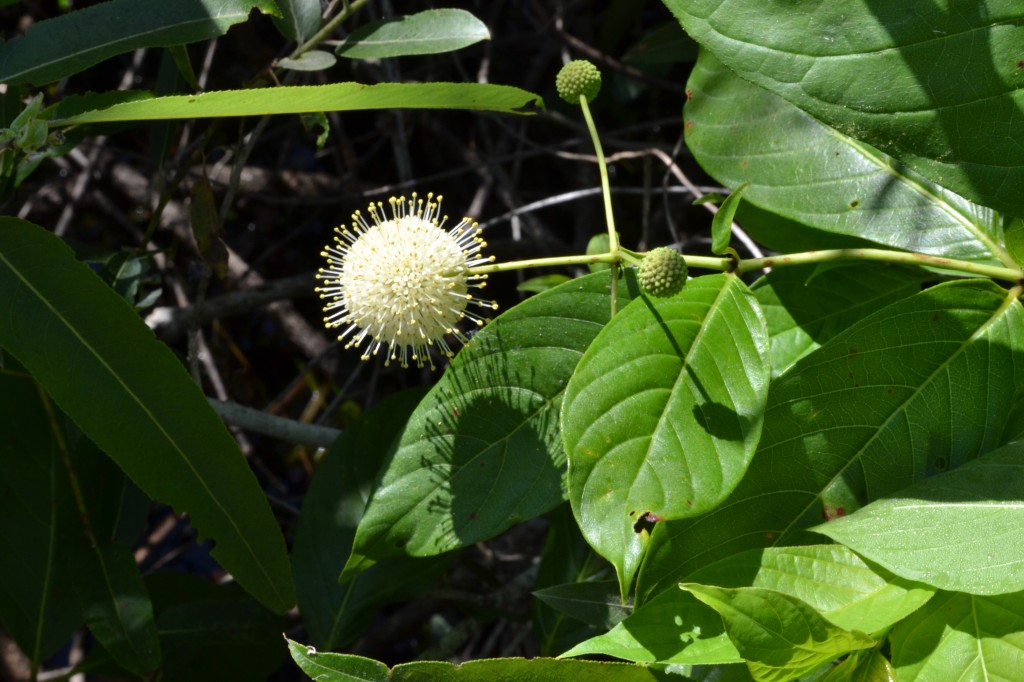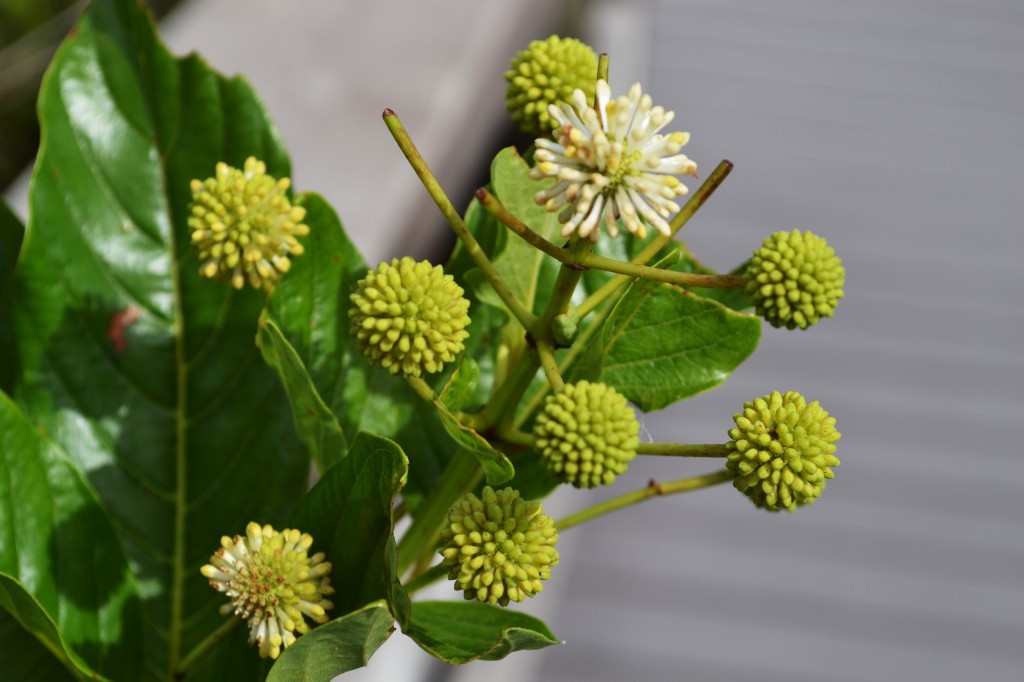Buttonbush
Cephalanthus occidentalis
Plant Family: Rubiaceae
Leaves: Opposite, simple, usually in whorls of 3 (sometimes 4); elliptic, shiny, with long pointed apices, to 16 cm long.
Bark: Brown, fissured; the trunk is narrow.
Flowers: Individually very small and white, but collectively held on long-stalked globular heads that look like pincushions; seen from spring into early summer.
Fruits: The small seeds are found on globular heads from late summer into fall.
Habitat: Buttonbush forms dense, single species thickets along the shores of slow flowing watercourses.
Growth Form: Usually an aquatic shrub with multiple trunks, rarely a small tree.
Key Feature: The large, shiny, elliptic leaves held in whorls of 3 or 4 distinguish Buttonbush from all other aquatic shrubs.
Comments: Buttonbush is a native aquatic shrub that ranges from south Florida, west to Texas, and north to southern Canada and New England. There are disjunct populations in Arizona and California. Bees make a distinctive honey from the blossoms, deer browse on the leaves, and ducks and small mammals eat the seeds.


